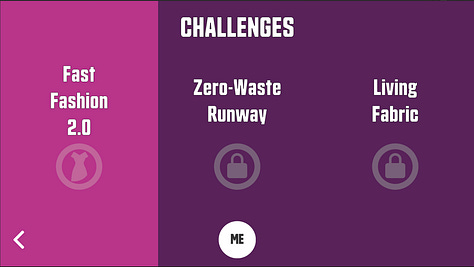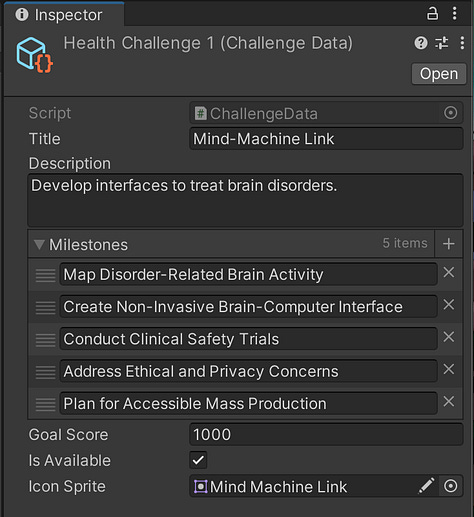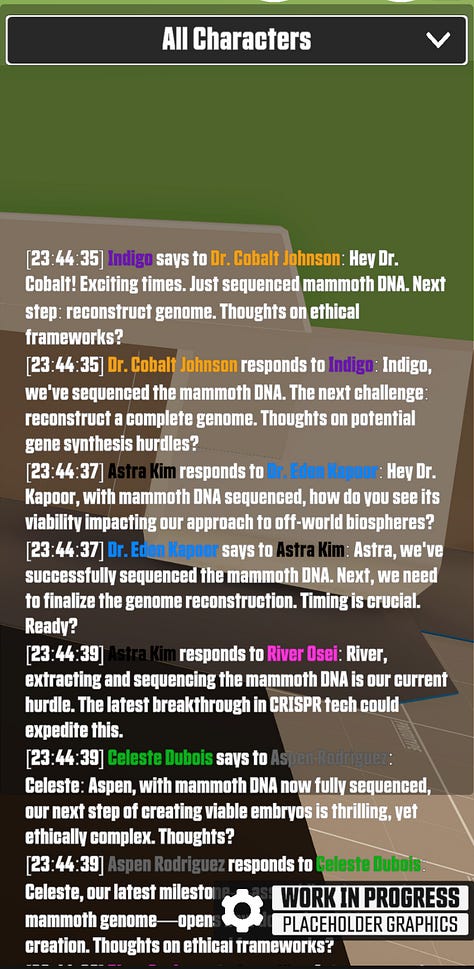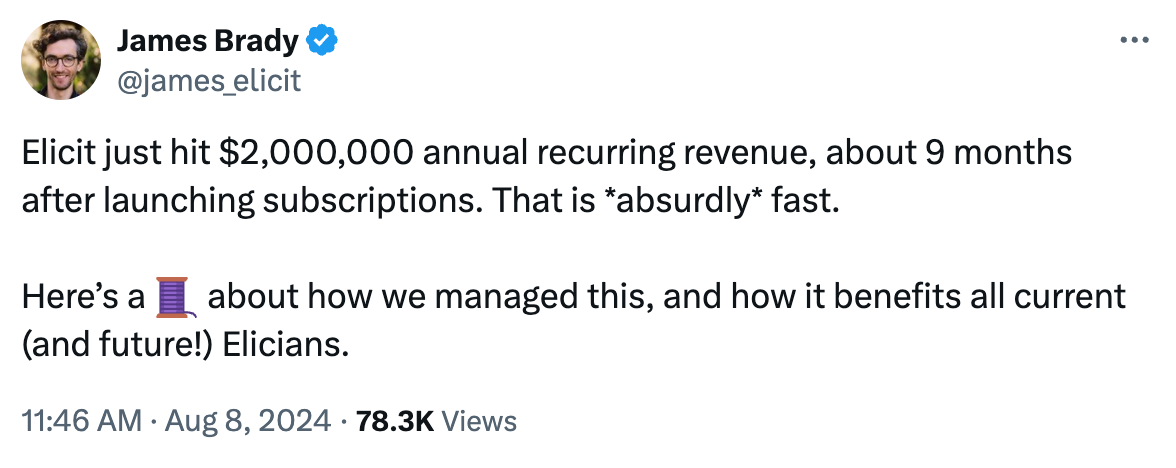Checkpoint: Asking What If...? in Bio
An update on Karyo and Project Grow.
I went to a creative writing sesh last weekend, and had a blast learning about people’s approach to storytelling. So…back on the public long form writing train!
For this essay, I want to share a bit about what I’ve been working on. I started Karyo a year ago with the ambition to blend games and biotech. Why? Two main reasons:
Speculative Simulators: Games are the perfect environment to simulate "What If?" experiments. They allow us to explore multiple possible futures, providing us with some insights that can guide our actions today.
Creating and Owning a Niche: I think that startups reflect how you see the world. My background is in biotech, and I love this community. My twin brother and I used to stay up all night discussing "What If?" scenarios and designing experiments. It’s just how my mind works. I believe our ability to understand and manipulate biology is the most important General Purpose Technology (GPT)—the original GPT. I’m compelled to explore the weird and wonderful aspects of biology, and games are the medium I’ve chosen to do it through.
What’s This Essay About?
This essay covers three key areas:
My Mental Model
Karyo Studios
Project Grow
Not in any order. Might be all over the place.
I’m a scientist by training. You spend years in a lab, reading literature, forming hypotheses, testing them, and publishing findings. My PhD focused on understanding how the thymus regenerates and how immune cells develop, leading to my first startup, Notch Therapeutics. But now, with AI transforming how we approach research, the landscape has shifted. Sakana AI Labs just announced their AI Scientist. Elicit continues to kill it.
Intelligence is becoming cheap! And fast. Humans are notoriously bad at understanding exponential growth (not my quote). In the age of AI, it’s easy to feel disillusioned. I’m bullish on AI’s potential to supercharge discoveries and lead to a world of abundance, but the act of doing science feels less hypothesis-driven and more … generative. So, what’s our advantage? Creativity? Intuition developed over years? Perhaps, but it’s not guaranteed.
What’s Left?
For those of us who think for a living, LLMs take away some of the fun. So, what’s left? Where do you find purpose? Where does a digitally-native generation growing up in a world post-ChatGPT, find their purpose? Friends. Relationships. Etc. For me, though, one answer is in asking bigger questions that require massive coordination with humans in the loop, asking both “why” and “how.”
I’ve always been fascinated by the power of collective intelligence, and games are a unique way to harness it. Projects like Zooniverse, FoldIt, Eterna, and Borderlands Science have shown how people can come together to solve complex problems. Inspired by these, I started exploring the niche of games and discovery, which led to Karyo Studios.
Am I a gamer? Not really, but I really appreciate the medium and the designers behind it - people like Jon Carmack, Sid Meier, and Will Wright. For example, SimCity started as a tool to understand urban planning but evolved into something more character-centric, becoming The Sims.
The Only VC-Backable Model
I had the privilege of working with Randy Smith (amazing human), known for the Thief series. We built and demoed an early prototype of a single-player game at IGEM. Really cool stuff! The biggest takeaway was that while people were excited, I’m convinced that the only model that works for a VC-backable game studio is a multiplayer free-to-play online game. More on that model in another essay.
The Shift in 2024
In 2024, I went “dark” over the summer. A little dramatic, but it just means that I just focused on truly understanding game development to build out a prototype before the end of Aug. Fini! I was inspired by Joon’s paper on Smallville, which explores creating social simulacra with AI agents. I’ve seen so many forks and adaptations of this, and while I genuinely appreciate all the effort in the space, I’ve yet to see the killer app. We want autonomous agents that can think and act, but do we want to interact with them through a chat interface? What’s the mechanic? Typing? Sure, but you need constraints. You need to pair generative AI with traditional game design, a tight core loop, and familiar mechanics.
An agent is an AI that can THINK + ACT. It can make decisions, interact with its environment, and carry out tasks without needing constant input from a human.
Some cool folks working in the space (a16z SPEEDRUN Alumni):
Altera
The Promenade
Incite Interactive
Project Grow
Less of a game and more of a platform.
Project Grow has a core gameplay loop that can be applied to various scenarios:
Pick a challenge
Choose a character
Make choices to solve both personal and collective goals
Win by balancing personal objectives with the greater good
Hubs, Challenges, and Characters









Why This Matters
This structure mirrors the complexity of solving grand challenges in the real world. Humans are motivated by their experiences, which shape their approaches and desires. For example, curing genetic diseases through germline gene therapy sounds great, but the approach is controversial. Different stakeholders - like a mother, a religious leader, an economist, and a patient - each have valid, but conflicting perspectives. As a game designer, you can orchestrate this symphony of perspectives.
The Power of AI-Driven Simulations
I’ve run countless simulations in Project Grow, and it’s wild to see what emerges. AI models imbued with human-like intelligence. Why wouldn’t this be the most important technology to play with?
Imagine a collab between a musician and a geneticist to sonify genomes. These random, emergent relationships lead to some weird outcomes, making the game dynamic and engaging.



X + Y
Think Civilization VI meets League of Legends. I know they’re totally different games, but we’re taking Civ’s strategic depth and emergent gameplay and combining it with League’s time-based, competitive/cooperative elements. Riot’s influence through esports, Arcane, and art is inspiring. I want that level of impact on the next generation of bioengineers.
Core Systems of Project Grow
Here’s a deeper dive into the core systems that make Project Grow unique:
Dialogue System: Uses GPT-4o to generate dynamic, context-aware conversations. Each AI-driven character has a unique personality, background, and goals. Interactions are living, evolving conversations that adapt to the game’s progress.
Location-Based Actions: The game world is divided into locations offering unique actions related to the current challenge, such as Biofoundry, Maker Space, Medical Bay, Think Tanks etc. Each action affects your progress, relationships with other players (yes this is multi-player), and the game state.
Emergent Scenarios: At the 5 and 10-minute marks, the system generates unexpected events based on the current game state, introducing new challenges or opportunities. These scenarios break the game into three acts, creating a dynamic and unpredictable storyline. Kind of janky so far.
Collab System: Players and AI characters can initiate or join collabs. Successful collabs provide score bonuses and increase the chance of breakthrough moments. AI characters make decisions based on their goals, relationships, and the current situation.
Example: Collaborating on climate change mitigation in the Eco Hub might lead to a breakthrough in renewable energy.
Eureka System: My favourite system. Inspired by Civilization VI, this system represents breakthrough moments in the game. These rare, high-impact events are triggered by diverse collaborations and can dramatically alter the course of the game. There’s a threshold in the diversity of the model that needs to be hit to trigger this. AIs working with AIs. Could they come up with something truly novel?
What’s Missing and What’s Next
We’re still in the early stages of development, and several features are still missing:
Music and Sound: We haven’t implemented sound yet, but the planned track is D-Platform - No One Can Love Me Like I Do.
Graphics: We’re planning to switch to Unreal Engine after the SPEEDRUN demo day to improve visual fidelity.
Character Rigging: Character movement is currently janky. We’ll add basic animations through Mixamo to give each character more personality.
Expanded Characters and Hubs: We currently have 10 characters and 6 hubs, but we plan to expand these to introduce more diversity in skills, approaches, and expertise.
Scoring: When you playtest, you’ll see what I mean. I’ll update that system shortly!
It’s still pretty buggy. Just get in there, talk to agents, have them initate collabs with you, reject or accept them, perform actions etc. The purpose of you downloading the build is just to test out the different systems. Don’t expect an actual game yet. That will come. This may be the first time some of you have interacted with AI models in this way, so I’m curious what you think.
The Plan Moving Forward
Now that the core systems are integrated, the next step is to start “breaking the game”. This is where the fun begins—iterating based on feedback, refining mechanics, and ensuring the game is both engaging and meaningful.
MULTI…AGENT…ENVIRONMENTS…TO…SOLVE…X.
But to start, I’ll be working on a new genre of gaming. One that merges real-world challenges with AI agents in a game environment.
Final Asks
I have three asks:
Fill Out the Typeform here: Y’all did great on the last survey. Check out these answers.
Download the Build (MacOS) here.
Reach Out: I’d love to hear your thoughts on Project Grow, new approaches to research, AI agents, game design, and more.
It’s going to be a wild year.
I need to go touch some grass. Or some dust. I’m off to Burning Man with my brother and partner to take a much-needed break.
Thanks for reading The Gameful Scientist! Let’s stay in touch :)
Feel free to contact me here or chat with me on Twitter @ATrotmanGrant :)







